Dallas Stars: Three Poor Player Contracts Going Into 2018-19 Season

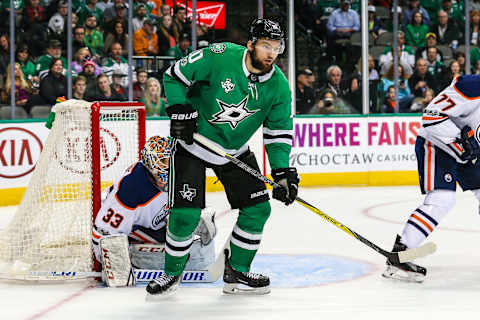
Every NHL general manager has their good moves and their bad moves. Dallas Stars general manager Jim Nill is no stranger to this. And while he has made some solid moves, he has also missed the mark on a few. Here are three of the Stars’ not so good contracts going into the new season.
Sometimes, things just don’t work out the way you might have planned. The Dallas Stars aren’t immune to this notion, and it even seems to meet them head-on rather frequently.
Since Jim Nill took over as general manager in April of 2013, the Stars have undergone some sizable changes. Names like Tyler Seguin, Jason Spezza, and Alexander Radulov have joined the franchise, while longtime Stars like Loui Eriksson, Antoine Roussel, and Kari Lehtonen have all exited.
As a result, there have been highs, lows, and in-betweens for the team over the past five seasons. But things never seem to go according to plan. In 2013-14, no one expected much of Dallas. But they made the postseason for the first time in five years and put themselves in a spot to contend in the loaded Central Division. The 2015-16 season was supposed to involve the Stars digging in for a tight race in the division. But instead, they blew by the competition and won the division and Western Conference as a whole in the regular season behind a 50-win performance.
And at the beginning of the 2017-18 season, many analysts picked the Dallas Stars to either win the Central Division or the Stanley Cup as a whole. Yet somehow, Dallas finished sixth in the division and missed the postseason for a second straight year.
More from Blackout Dallas
- Dallas Stars Traverse City Tournament: Who had great performances?
- Grushnikov and Stankoven lead Dallas Stars to 6-3 win over Columbus
- Dallas Stars prospects look to wrap up tournament with a win
- Burn the tapes: Dallas Stars prospects lose 5-1 to Toronto Maple Leafs
- Dallas Stars look to continue success today against the Maple Leafs
Nothing seems to ever go according to plan in their season-by-season endeavors. The same can be said about their player contracts to an extent.
Like every GM in the NHL, Nill has looked like a genius at times with some of his free agent signings and trades. But on the flip side, he’s also looked rather foolish with certain acquisitions and signings (just like every GM). It’s what makes the general manager position one of the hardest jobs in all of sports.
Luckily for the Stars, Nill has looked smart on more occasions than he’s looked foolish. But still, some of his past moves still bring back bad memories (see: Anders Lindback and Jiri Hudler).
On Monday, we looked at three of the Stars’ best player contracts in terms of value heading into the 2018-19 season. Nill has signed a handful of players to team-friendly deals that help put the team in a great position going forward.
But there also a handful of contracts in the Dallas Stars organization that aren’t necessarily in the best interest of the team.
Considering it’s early August and the 2018-19 season is slowly approaching, let’s take a look at some of the Stars’ “not so good” contracts. Here are three Dallas skaters that aren’t necessarily panning out for the team at the moment.
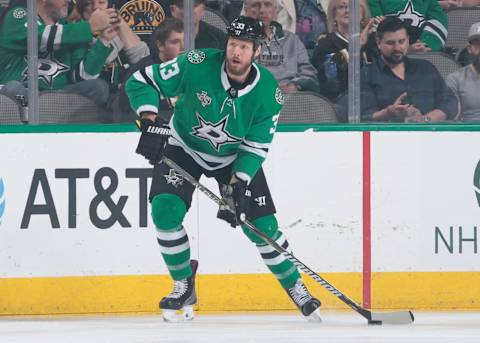
3. Marc Methot
Contract details: Four years, $4.9 million AAV (one year left)
The good thing about the Dallas Stars’ setup is that they aren’t particularly loaded with “bad” contracts. As a result, some of these selections come with a bit of a stretch to them.
Marc Methot is one of those stretches. And this one isn’t really on Nill or Methot.
In the week leading up to July 1, 2017, Nill took a chance to shore up his defense. The Stars had finished the 2016-17 with the second-highest goals against average in the NHL (3.17) and needed something to help change the tone and flip the script.
Hiring Ken Hitchcock as the new head coach proved to be a step in the right direction, but Nill doubled down and added a veteran blue liner as well.
Live Feed class=inline-text id=inline-text-7
SenShot
The Vegas Golden Knights traded Methot to Dallas less than two weeks after selecting him in the 2017 Expansion Draft. In return, the Stars gave up 2017 seventh-round pick Dylan Ferguson and a second-round pick in the 2020 NHL Draft.
The trade made sense for Dallas at the time. They needed a big, physical body for their relatively small defensive lineup that could be a threat behind the blue line and an asset to the penalty kill. Methot checked the boxes, so the Stars paid a decent price to pry the veteran away from a newly-built team.
But the payoff didn’t necessarily show up in 2017-18. And, as we mentioned above, a lot of that isn’t on no. 33.
Methot only played in 36 games during the season and missed over half the year due to a nagging knee problem. He had arthroscopic knee surgery in mid-November to repair the issue and was sidelined until early January while recovering.
But even after returning to the lineup, the 33-year-old still wasn’t at one hundred percent. He played in just one game against New Jersey in January before sitting out for another six weeks. And upon his second return, he only played in 20 more games through the final seven weeks of the season.
It was evident that Methot struggled in getting back to his regular form. In his previous five seasons with Ottawa, he averaged 21:17 on the ice. But in year one with Dallas, he skated an average of 17:53.

Dallas Stars
And in his absence, the Dallas Stars put on an impressive youth movement on the blue line. The defense’s performance remained consistent and even improved as the season rolled along. As a result, the youth movement for the Dallas defense looks to have arrived.
With his playing time limited, injuries weighing him down, and Hitchcock shifting him around the lineup, it was near impossible for Methot to establish himself. As a result, he had a subpar season.
He finished the year with one goal and three points, though he’s not known for being an offensive defender by any means. His hit totals were intact with 77 in the 36 contests and also put up an impressive +11.
But it’s difficult when the highest-paid defender and sixth-highest paid player on the roster can’t play for half of the season. And to top it all off, the Dallas Stars now know that they have a deep prospect pool on defense that is ready for full-time NHL action.
Methot can still be an asset on the Dallas defense and will be its oldest member this season. He’s a leader that can add a physical and shutdown dimension to the Stars’ blue line, so there’s definitely a spot for him to fill this year.
Whether he can play consistently or not will be up to him and his knee. But at almost five million per year, the Stars need him to be at his best, especially in a contract year.
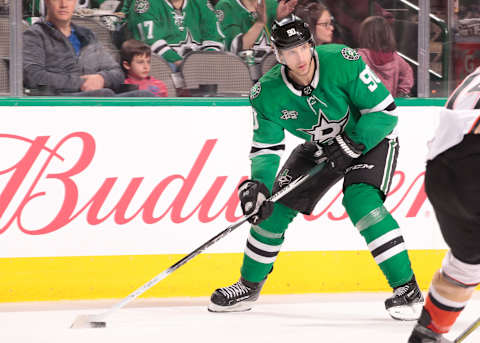
2. Jason Spezza
Contract details: Four years, $7.5 million AAV (one year left)
This one is a bit more complicated.
Rewind back to June 2014. The Dallas Stars are fresh off of their first playoff appearance in five years and took a big step in the road back to becoming a contender. But among a few minor needs, there is one pressing matter that needs attention: the team’s depth at center.
Tyler Seguin proved to be an elite no. 1 center in his first season with Dallas, so the top line was alright. But outside of the top three, the need became significant down the middle. Cody Eakin was too young to take on a top-six role and there were no other natural options at center on the roster.
That’s why Nill spent part of July 1 acquiring veteran superstar center Jason Spezza. As Spezza entered the final year of his deal, he had requested a trade from a rocky Ottawa Senators team to a contender. The Stars were first in line and made the deal happen quickly.
Live Feed class=inline-text id=inline-text-7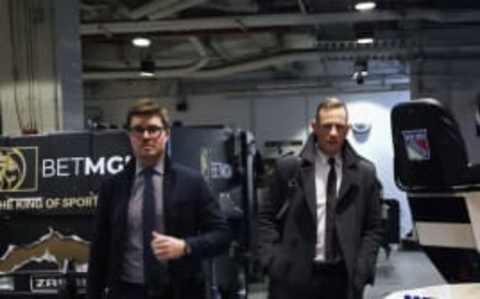
Editor In Leaf
And not even two months into his first season with Dallas, Nill made sure to lock Spezza (who was 31 at the time) up on a new deal for four more years.
But problems didn’t begin arising until the 2016-17 season. Spezza lived up to his potential and the new contract in the 2014-15 and 2015-16 seasons, posting 50 goals and 125 points (50 on the power play) while also winning 54.4 percent of his face-offs through 157 games. Those are great numbers for a second-line center. And on top of that, he also served as a veteran leader to a relatively young Dallas offense.
In 2016-17, he hit a bit of a rough patch. Spezza missed 14 games due to a lower-body injury, which limited him to 68 games on the year. His 15 goals and -18 rating weren’t entirely impressive, though his 50 points still provided a decent argument considering his reduction in ice time.
As the Stars entered 2017-18, many expected Spezza to put up similar numbers to the year before. Sure, he was getting older, but the potential and abilities were still there.
But they all seemed to disappear when Ken Hitchcock took over as head coach. Spezza didn’t seem to fit Hitch’s system, and so he was treated as an extra. As a result, Spezza skated in 78 games, posting eight goals and 26 points. Those are both the lowest marks of his career since his rookie season in 2002-03.
A -12 rating helped round out his disappointing year as Spezza was constantly shifted throughout the lineup, paired with “fourth line grinders,” and put in a tough position to succeed.
That’s what makes the $7.5 million per year all the more painful. Spezza delivered on the first two years of the deal, but it looks as though the term was stretched out too far.
Spezza has one final year on the contract, and it will be crucial for him to deliver. He will likely start the year as the Stars’ no. 2 center, but at the age of 35 and his production hitting a sharp decline last season, it might be tough for him to reignite the flame. But that’s what needs to happen.
After all, his extension with Dallas is the kind that demands results. And at the moment, that extension is looking awfully rough.
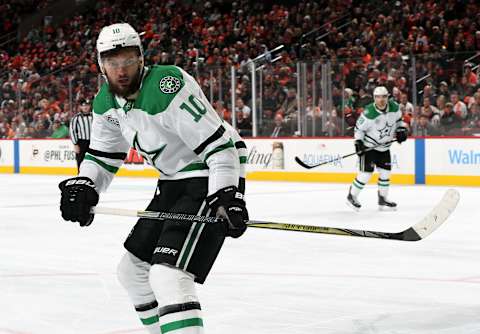
1. Martin Hanzal
Contract details: Three years, $4.75 million (two years left)
This contract has been in question since the reported offer made its way across Twitter on July 1, 2017.
When it was announced that the Dallas Stars were signing center Martin Hanzal to a three-year deal, many wondered about the motivation behind the acquisition.
Just two weeks prior, the Stars had lost Cody Eakin in the Expansion Draft. But even after the draft, they still seemed set up nicely at the center position with Tyler Seguin, Jason Spezza, Radek Faksa, and a mixture of Gemel Smith, Jason Dickinson, and Devin Shore to serve on the fourth line. Everything inside the dot looked good.
Live Feed class=inline-text id=inline-text-6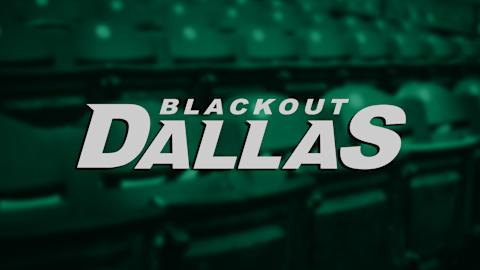
Sports Dallas Fort-Worth
So, why would they sign a big-bodied center whose main skills involve winning face-offs and providing depth and defensive help? The question seemed to linger into the regular season.
And even with the 2018-19 season on the horizon, Stars fans are still asking that question.
Hanzal didn’t have an ideal first season with the Dallas Stars and left a lot to be desired as a result. Going into the year, many assumed he would fill a second line role alongside Jason Spezza after a successful stretch of playing in the top six in Arizona for the majority of his career.
But Hanzal didn’t end up being much more than a depth option to beef up a smaller bottom six lineup.
When healthy, he was a physical asset that could win face-offs in both zones, serve as a quality net-front presence, score the “dirty goal,” keep the pressure alive on the power play with the second unit, and serve as a viable penalty killer.
The key words in the sentence above are “when healthy.”
Injuries took a toll on Hanzal’s 2017-18 season and kept him from being a consistent starter. He played in a handful of games to start the year before missing the first two weeks in December. Hanzal also missed a handful of games towards the end of the month and into January. And after playing in five games through the first 21 days of February, Hanzal received a final verdict: spinal fusion surgery that would sideline him for the rest of the season.
Hanzal’s recovery is still ongoing and will drag into the beginning of the 2018-19 season, meaning more time on the IR for the 31-year-old center. He isn’t expected to be cleared to play until at least late November, meaning he could miss up to a quarter of the season. And once he’s back, there’s no guarantee that it will be long-term.
More from Editorials
- Dallas Stars hockey is about to be the main attraction in Dallas this year
- Age Before Beauty: The impact of Benn’s new role on his Dallas legacy
- Dallas Stars hockey is the light at the end of the tunnel
- Dallas Stars coverage is lacking and it’s very concerning to be honest
- Sit back, relax and watch Jim Nill and the Dallas Stars draft scouts cook
That’s not good for a few reasons. The first reason is that the Dallas Stars can really use Martin Hanzal considering his unique skill set. He can fill a role that not many others can fill when in the lineup.
But it’s also not good because the Stars are spending $4.75 million of their cap on an aging center that will have missed over half of his games as a Star by the time December rolls around.
Like in Methot’s case, injuries cannot be planned for nor can they be expected. The question here is in regards to whether or not signing Hanzal was the right idea in the first place. His contract and the cap space sure don’t seem to favor that idea right now. For a guy making almost $5 million a year, Hanzal needs to be earning it on a nightly basis.
But the Dallas Stars are in a pretty good spot when it comes to their “bad” contracts. Each one either has a solid reasoning behind it or will be off of the Stars’ books soon. That can be chopped up to solid management by Jim Nill and the rest of the organization.
dark. Next. Debating Seguin's Spot On Top 20 Centers List
Will their players with “not so good” deals be able to prove their worth in the season ahead? That’s the real question.